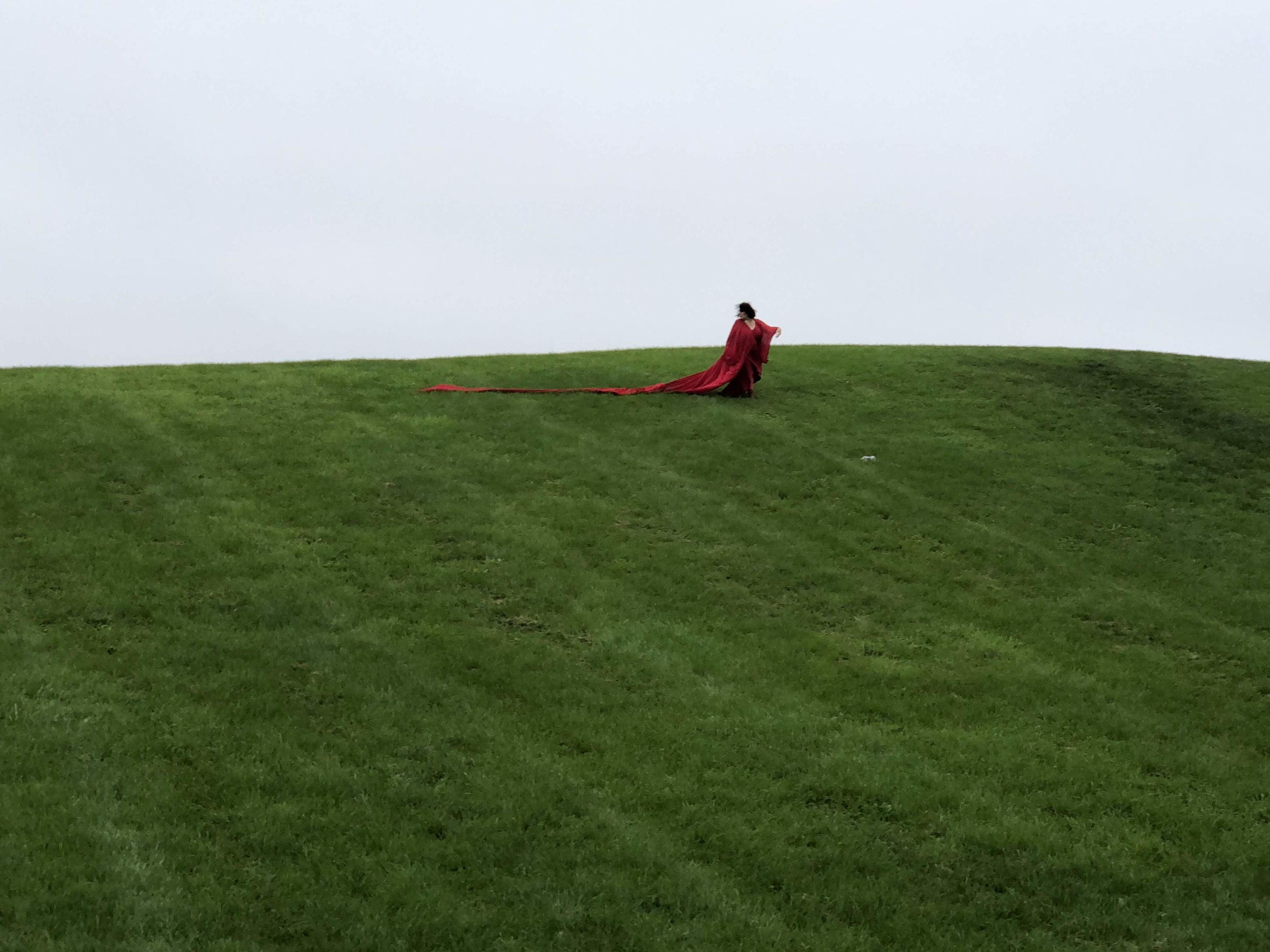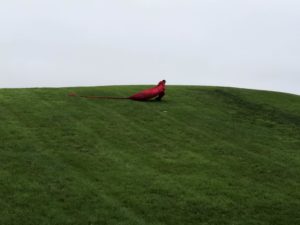
Toxic Tango: Site-Specific Art for Environmental Crisis

Scarlett Wardrop
When artist Julie Laffin and writer-teacher Jennifer Natalya Fink talk about environmental degradation, they focus on more than rising sea levels, polluted air, fouled waterways, and animal extinction. In fact, their site-specific art project, Toxic Tango, asks viewers to draw connections between our physical, emotional, and public domains, in essence making the personal political and vice-versa.
Performed just twice, in South Bend, Indiana, and Washington, DC, Toxic Tango aims to raise consciousness, unsettle viewers, and provoke debate about how best to promote tikkun olam, the healing of our devastated planet.
Laffin, based in Illinois, and Fink, based in Maryland, spoke to Eleanor J. Bader by phone in early October.
Eleanor J. Bader: Where did the idea for Toxic Tango originate?
Julie Laffin: I have a long history of making gowns and inserting myself into public spaces to promote a particular idea, but after I became disabled 15 or so years ago, I could no longer do this. I have environmental illness. Unfortunately, not much is known about these things. Is it a brain injury? Is it an endocrine disorder? Toxic overload? No one knows. What I do know is that these illnesses are idiosyncratic. People with them have a lot of different symptoms including respiratory difficulties and food sensitivities. Since I can’t easily go into public spaces anymore, but still want to make art that intervenes in public life, I’ve looked for surrogates, other women, who enact the performance pieces I co-create.
Jennifer Natalya Fink: Julie and I went to graduate school together at the School of the Art Institute of Chicago from 1988 to 1990. We connected again over disability – I have a daughter on the autism spectrum and, as she said, Julie has environmental illness. We started talking about doing a performance that addressed environmental contamination and found an opportunity to collaborate in the fall of 2018. I was going to &NOW, a conference at Notre Dame University. The city of South Bend, Indiana, where Notre Dame is located, is very flat, with areas of extreme wealth and areas that are poor and largely African American. LaSalle Park is in the African American neighborhood and was built on a toxic waste site. It looks like a huge mound in an otherwise flat landscape.
Julie and I devised a performance for this park. I wore a beautiful, glamorous, 100-foot-long red dress which played into the spectacle of the female body. The performance involved me running up a huge hill, then rolling down until I was bound up in the dress. At one point I inserted dirt into my stomach via a hidden pouch. As I moved up and down the mound, Julie read the government’s Super Fund Report about the site’s contamination. She was audible through my cellphone. At the end of the performance, we gave out leaflets that explained the context for what we were doing. We informed people that the Park was designated as a Super Fund site in 2013, but that both state and federal officials had known that the land was contaminated as early as 1984. Why, we asked, hadn’t it been cleaned before the park was constructed?



